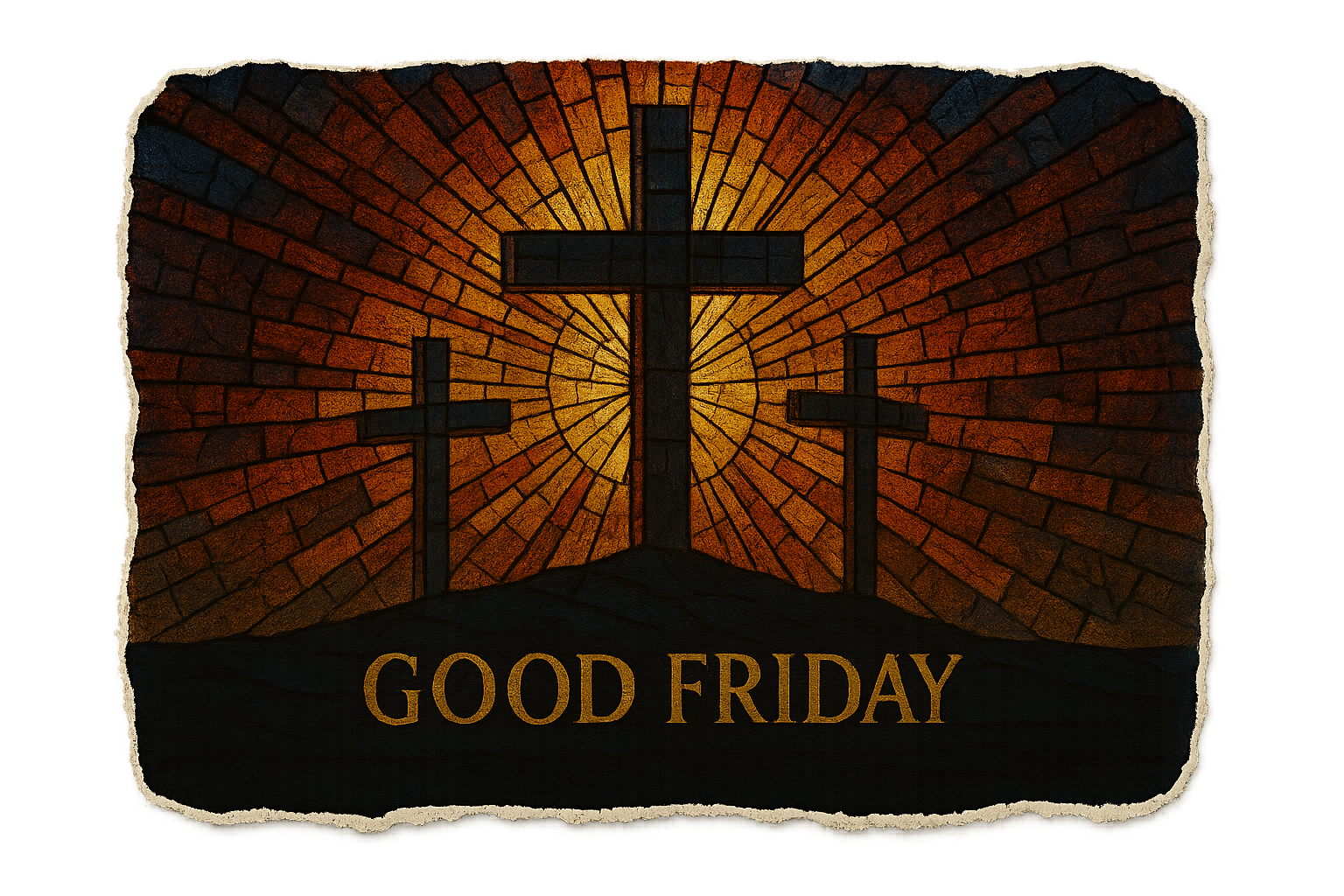A History of Good Friday
An exploration of the historical development, liturgical practices, and cultural significance of Good Friday from its earliest observance to the present.
Today is Good Friday, the solemn commemoration of Jesus Christ’s crucifixion. While it represents one of Christianity’s darkest moments, its seemingly contradictory name has puzzled many throughout history. Here we will explore the etymological origins of “Good Friday,” analyze its historical liturgical development, and investigate how a day of profound suffering came to bear such a positive designation.
The Etymology of “Good” in Good Friday
The apparent contradiction in calling the day of Christ’s crucifixion “good” has led to various explanations throughout history. The most linguistically sound explanation traces back to an older meaning of the word “good” itself.
The “Holy” Theory: Most Supported by Linguistic Evidence
The term “Good Friday” comes from the sense ‘pious, holy’ of the word “good”1. This usage wasn’t unique to Good Friday; similar applications include “the good book” for the Bible and “Good Wednesday” for the Wednesday in Holy Week1. In Middle English, “good” functioned as a synonym for “holy” or “sacred”, supporting the interpretation that “Good Friday” originally meant “Holy Friday”21.
The “God’s Friday” Theory: Linguistically Questionable
A popular but linguistically dubious theory suggests that “Good Friday” evolved as a corruption of “God’s Friday” or “Gottes Freitag”3. However, modern linguists generally reject this etymology1.
Cross-Cultural Naming Variations
The naming of this somber day varies significantly across languages and cultures:
- In German: “Karfreitag” (Sorrowful Friday)2.
- In Old English: “Long Friday” (langa frigedæg), likely referring to extended devotional practices1.
- In Romance languages: Typically called “Holy Friday”2.
Historical Development of Good Friday Observances
The commemoration of Christ’s crucifixion has undergone significant evolution since Christianity’s earliest days, reflecting changing theological understandings and liturgical practices.
Early Christian Practices
Good Friday holds a prominent place in Christian church history, dating back to at least the 4th century in Jerusalem4. Egeria, a pilgrim, described a procession of Christ’s cross through Jerusalem, where it was venerated4.
Evolution of Liturgical Celebrations
The practice of abstaining from celebrating the Eucharist on Good Friday represents one of the oldest traditions3. By the seventh century, receiving communion from the Sacrament reserved after Maundy Thursday became standard3.
Traditional Good Friday Liturgical Practices
The Good Friday liturgy has developed distinctive characteristics, emphasizing solemnity through symbolic elements and ritual practices:
- The Liturgy of the Word: Featuring specific readings including Isaiah’s Suffering Servant passage and the Passion narrative from John’s Gospel1.
- The Solemn Intercessions: Ten formal prayers covering various intentions3.
- The Adoration/Veneration of the Cross: A ritual where the cross is unveiled and venerated3.
- Holy Communion: Distribution of the previously consecrated Sacrament3.
Ritual Elements and Symbolism
- Bare Altar: Symbolizing Christ’s abandonment and death3.
- Vestments: Clergy wear red or black vestments3.
- Prostration: Representing grief and sorrow3.
The Paradox of Calling Christ’s Crucifixion “Good”
The apparent contradiction in labeling the day of Christ’s suffering and death as “good” speaks to a central paradox within Christian theology: how the darkest moment in history became the source of humanity’s salvation.
Theological Reinterpretation of Suffering
Good Friday commemorates profound suffering, yet Christian theology reframes this suffering as redemptive2. This perspective transforms what appears to be defeat into victory, what seems to be tragedy into triumph2.
Conclusion
The designation of “Good Friday” reflects a profound theologicsal paradox. While linguistic evidence supports the explanation that “good” originally meant “holy,” the theological reinterpretation captures something essential about Christian understanding: that in Christ’s suffering lies redemption, and in his death, the possibility of eternal life.
Wishing you a profoundly meaningful and fulfilling Good Friday, filled with reflection and peace. – Lib
Further Reading
- A Time to Weep – On Good Friday Reformed Worship
- Good Friday Christianity, Easter, Definition, History … - Britannica
- Catholic Festivity on Good Friday, Not Antithetical - His Girl Sunday
- Why Is Good Friday Called Good Friday? HistoryExtra
- The Theology of the Novus Ordo Good Friday Liturgy
- The Origins and Practices of Holidays: Good Friday - Boston Public …
- Great and Holy Friday - Greek Orthodox Archdiocese of America
- Alternative Readings for Good Friday - Maryland Episcopalian
- Good Friday - Easter / Lent - Catholic Online
- The Good Friday (PART 1) A Historical, Liturgical and Theological …
- Contemplating Good Friday and the Annunciation Catholic Culture
- When did Good Friday begin to be observed? - eBible
- What is the first recorded observation of Good Friday?
